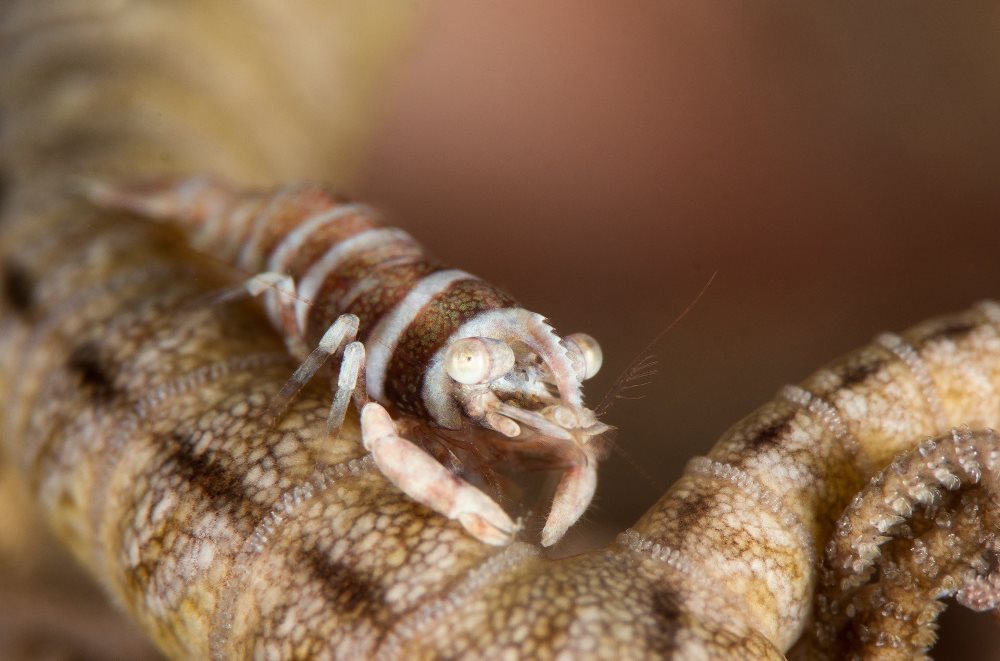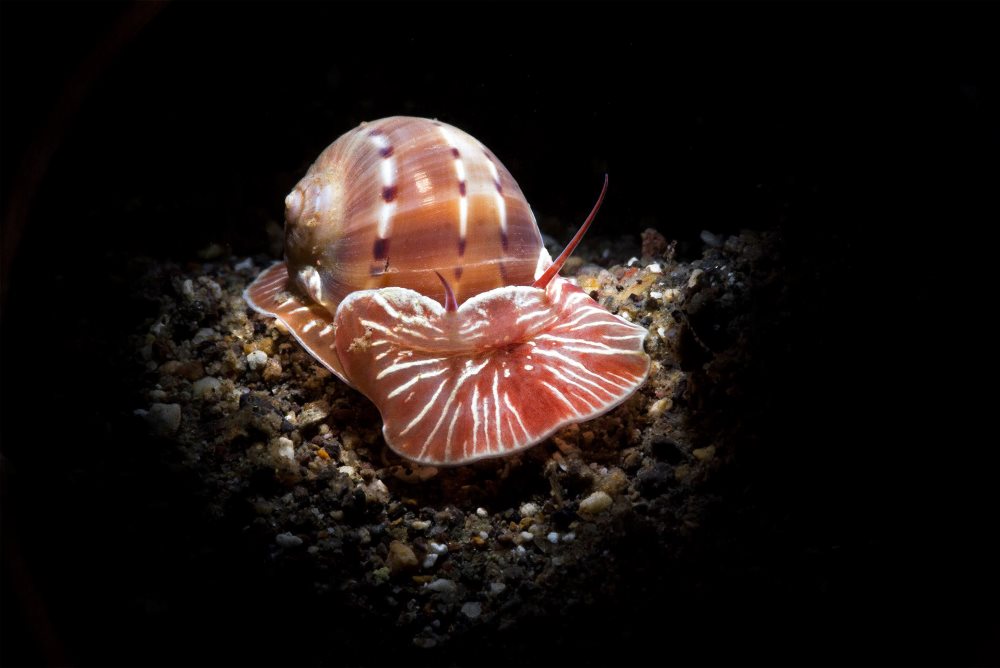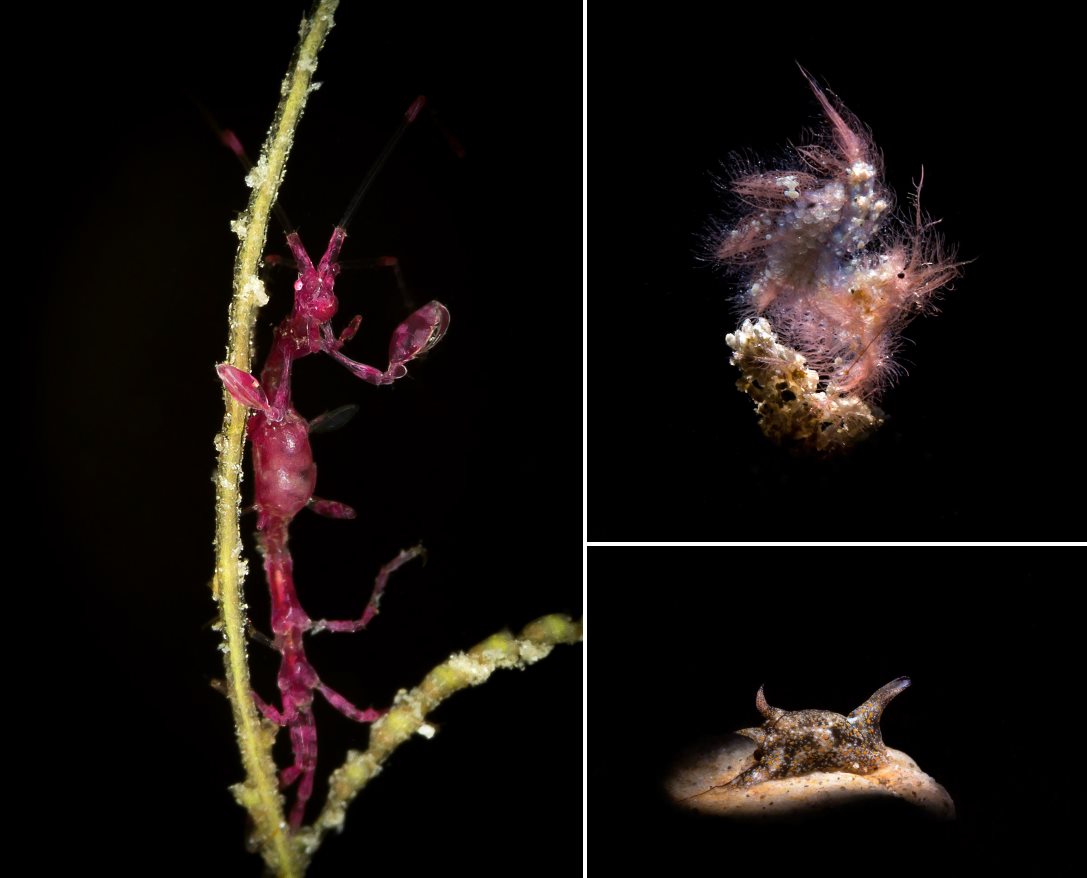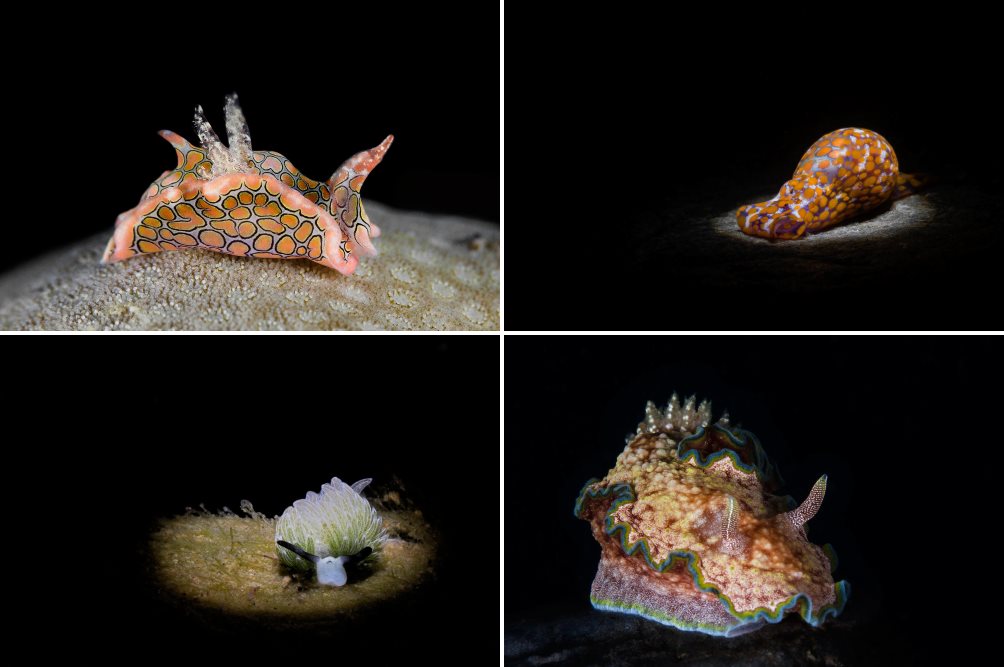
The Canyons are the adrenaline junkie’s sites of choice.
During times of strong currents, boasting a thrilling ride with rest-stops in the naturally formed bowls while you watch all this different amazing schools of trevally, tuna, and sometimes barracuda hang effortlessly in the current.
The Alma Jane wreck is a favorite among wreck enthusiasts, is easily accessible, and is home of several giant frogfish, big schools of batfish, and small tropical fish.

Of course, no trip is complete without a two-dive trip to Verde Island. Large schools of big fish, monstrous sea fans, walls and stunning reefs are the rule here and warrant at least the effort of the long journey.
Most of the other sites are lovely, and there is never a shortage of interesting things to see alike since they have a lot to offer like the varied species of soft corals, gorgonians, crinoids, colorful sponge and tunicates, crustaceans and shrimps.
But overall I think Puerto Galera is pre-eminently a macro destination, so if you are macro lover and you want to experience fantastic macro dives – you are in the right spot here!!!

“Muck” dive sites like Secret Bay and Giant Clams are home to a huge array of macro critters, exceptional encounters with Wunderpus (Wunderpus photogenicus) and Flamboyant cuttlefish (Metasepia pfefferi), Hairy frogfish (Antennarius striatus) and Mimic octopus (Thaumoctopus mimicus), Ornate ghost pipefish (Solenostomus paradoxus) Seahorses and strange Nudibranchs of various types and size.
In this area you can find also one of the most venomous creatures in the oceans is the Blue-ringed octopus (Hapalochlaena lunulata) and the close relative Mototi octopus (Amphioctopus siamensis) and one of the most beautiful shrimp, Harlequin shrimp (Hymenocera elegans).Another unmissable “muck” dive site is Montani beach, in shallow water you can spot amazing creatures like Hairy shrimp (Phycocaris simulans), Xenia shrimp (Alcyonohippolyte commensalis), Xenia swimming crab (Caphyra sp.), Painted frogfish (Antennarius pictus), Warty frogfish (Antennarius maculatus), Tiger shrimps (Phyllognatia ceratophthalmus); on this site it is common to come across a colony of Clown fish, of course with their own eggs.
The ideal spot for a relaxing night dive.

In front of Sabang Bay there are other noteworthy dive sites for macro photography; Sabang west where, with the right dive guide you will see; Paddle-flap scorpion fish (Rhinopias Eschmeyeri) and Weedy scorpion fish (Rhinopias Frondosa), Skeleton shrimp (Caprella sp.), Saw blade shrimp (Tozeuma sp), Emperor shrimp (Zenopontonia rex) on top of the sea cucumber and Crinoid squat lobster (Allogalathea elegans), while in Sabang point is assured to find pygmy seahorse (Hippocampus bargibanti) pink and yellow color.
Moving to south-west of the promontory you can reach other great dive sites for macro photography, Sinandigan wall a sloping reef called nudibranchs’ city, Coral cove a mixture of sand and stones rubble.
The Boulders with its lunar landscape and plenty of whip corals, and Palangan point where there are two different areas, the first one with sand bottom and soft corals, right habitat for small soft coral porcelain crab (Lissoporcellana sp.) and the other one with a small coral wall and stones rubble.

The most common encounters at the dive sites mentioned above can be Dragon shrimp (Miropandalus hardingi), Humpback soft coral shrimp (Alcyonohippolyte dossena), Xeno crab (Xenocarcinus tuberculatus) on a whip coral, small cuttlefish, beautiful crinoids with their commensal shrimps inside, Candy crab (Hoplophrys oatesi), pair of Coleman shrimp (Periclimenes colemani) on a fire urchin, Hairy pigmy yellow gobies (Paragobiodon xanthosoma), and Mouth brooding Ring-tailed cardinal fish (Ostorhinchus aureus) which incubates eggs in the mouth.
In any dive sites suitable for macro photography there is the certainty to find the most popular invertebrate subject amongst macro photographers, which has various colors, shapes and size the “nudibranchs”.
However, I would like to recommend, if you love the spirit of research and to venture out for a never visited place: the result could give you enormous positive surprises.
Talk to your guides and tell them what you are looking for, give them your wish list. Their preparation will surprise you. For sure you will have a great chance of completing it.
This is also the right time and situation to try some shooting making use of instruments such as the snoot, but also of a special camera techniques like backlighting, dark background and bokeh.
… hunters from all over the world come to the Philippines looking for Spanish galleons. In the “Port of Galleons” the real treasure of the underwater world can be seen by anyone, with underwater equipment and of course with a camera.

HOW TO GET TO PUERTO GALERA
Manila can be reached from Europe with several airlines.
From Manila about 2 hours by car / bus to the port of Batangas City from which you embark on typical Philippine rocky boats for Puerto Galera Muelle, Sabang Beach and White Beach (about 60 minutes), or you can board a ferry for Balatero Pier (about 85 minutes).
Another solution to reach Puerto Galera is to take the fast hydrofoil to Calapan (90 minutes), which also travels with the sea slightly moved, from Calapan takes the classic jeepney to Puerto Galera, travel lenght depends a lot on the sea and road conditions (roughly 2 hours and a half to three hours and a half the total trip from Batangas).
If you are late the ideal transfer is in seaplane, from Manila to Puerto Galera, surely the fastest but probably the not cheapest route.
Many thanks to Fishermen’s Cove Dive Resort
WORDS and PICTURES by Paolo Bondaschi

















